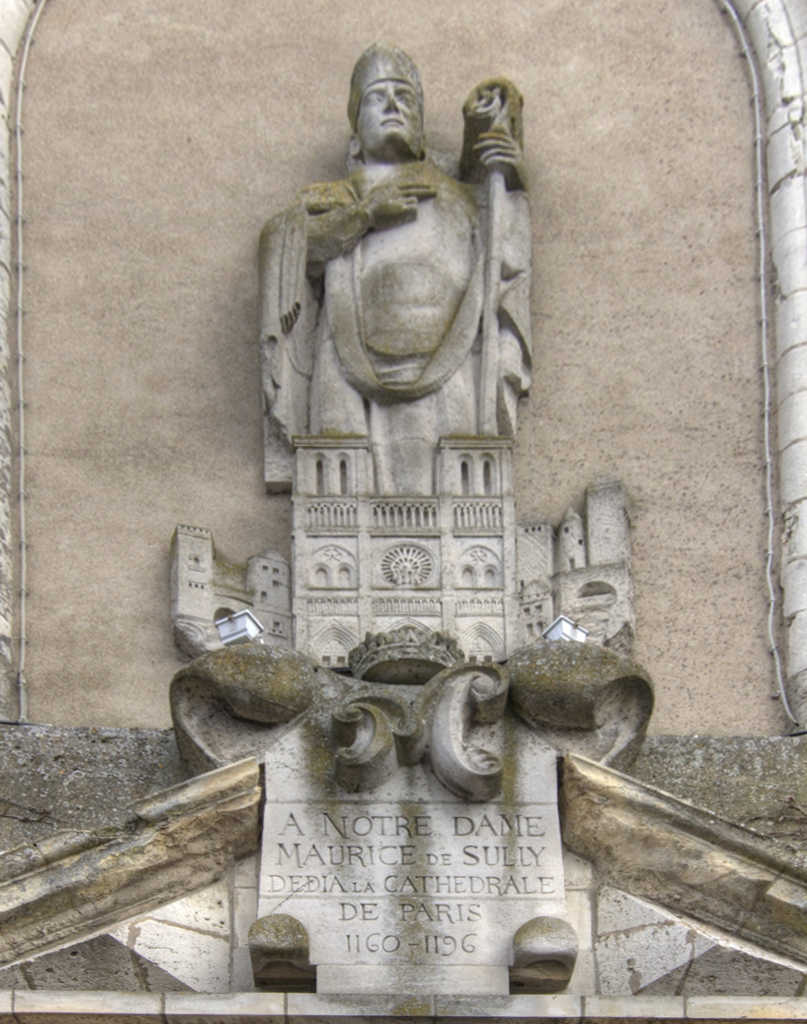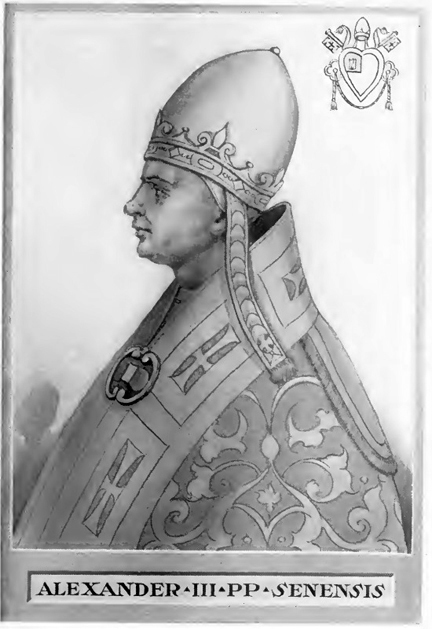




Stone sculpture in honor of Maurice de Sully and the Cathedral.
When it was elected the episcopal seat, the Cathedral of Paris, named after St. Stephen, was a building with five naves, 35-meters large and approximately 70-meters long [on the floor of the actual front area, it's possible to notice the trace of the St. Stephen Cathedral foundations.]] (exceptional dimensions for a 7th century construction, since they surpassed those of Rome, Jesuralem or Bethlehem basilicas). Inspired by the new style construction of other churches like that of St. Denis and the cathedrals of Sens, Noyon, Laon and Senlis, Maurice de Sully decided that Paris should have a cathedral unlike any other. In 1163, only three years after his election, he undertakes the monumental masterpiece that will immortalise his name: the construction of the Cathedral of Notre-Dame, the first stone of which will be placed by the pope, Alexander III, on that same year.
— Direct translation of the Maurice de Sully profile on the Cathedral of Notre-Dame website; original below.
Lorsqu’il fut élu sur le siège épiscopal, la cathédrale de Paris, placée sous le vocable de Saint Étienne, était alors un édifice à cinq vaisseaux, large de 35 mètres, long de près de 70 mètres[[Sur le sol du parvis actuel, on peut apercevoir le tracé des fondations de cette cathédrale Saint-Étienne.]] (dimensions exceptionnelles pour une construction du VIème siècle puisqu’elles dépassaient celles des basiliques de Rome, de Jérusalem et de Bethléem). Émerveillé par la construction dans un style nouveau d’autres églises comme celle de Saint Denys et des cathédrales de Sens, Noyon, Laon et Senlis, Maurice de Sully décide que Paris doit se doter d’une cathédrale à nulle autre pareille. En 1163, tout juste trois ans après son élection, il entreprendra le chef-d’œuvre monumental qui immortalisera son nom : la construction de la cathédrale Notre-Dame dont le pape, Alexandre III, en posera la première pierre cette même année.

This illustration is from The Lives and Times of the Popes by Chevalier Artaud de Montor, New York:...
Reconstruction of the cathedral was part of a larger redesign of the eastern part of the Ile-de-la-Cité. This neighborhood housed the church officials, masters, clerics, servants and others who worked to run the diocese of Paris and the cathedral school.
Maurice’s other projects at the time included construction of a new street, the rue Neuve Notre-Dame, which ran from the cathedral to the west – now replaced by the square in front of the cathedral. He also built a new palace for the bishop and a new charitable hospital.
— Maile Hutterer on The Conversation

On April 15, 2019, a fire struck the cathedral of Notre-Dame de Paris. This timespace guides you through the history and possible future of this Parisian landmark.